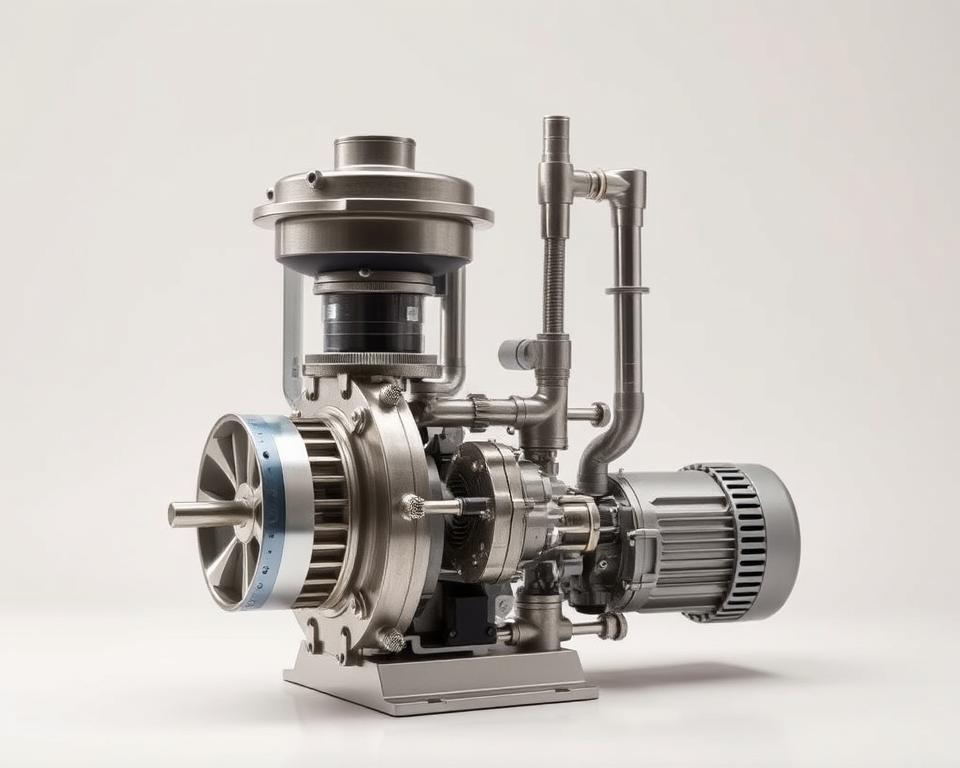Septic Pump Out Expense Guide for American Homeowners
Did you know nearly one-third of American homes employ septic systems for waste disposal? This fact highlights how essential it is to be aware of septic pump out costs. Maintaining regular maintenance, like septic tank pumping, is vital. It helps your system’s longevity and prevents pricey repairs down the road.
The cost to clear a septic tank can range significantly, from $100 to $800, with an median of $600. Understanding these costs helps homeowners budget for their finances. It also ensures their systems operating well.
Understanding the Value of Septic Tank Maintenance
Keeping a septic tank in good shape is crucial to a home’s sewage system working right. It’s advisable to pump it out every 2 to 3 years to prevent solid waste from accumulating. This accumulation can result in contaminated groundwater and damage the septic system.
Many homeowners don’t understand how vital regular inspections and maintenance are, not just pumping. These steps can save a lot of money by preventing major repairs or even needing a new system. Understanding septic tank maintenance costs can help save money and keep the home and environment safe.
Knowing the right maintenance timeline is vital. Adhering to these schedules helps safeguard your property and the environment from the dangers of untreated waste. Staying aware about septic tank services in my area near me helps your surroundings remain secure and green.
The Average Septic Pump Out Expense
Knowing the average cost to empty a septic tank is important for homeowners to plan their finances. The cost can vary significantly, depending on many factors. It generally costs between $300 and $700. However, there are additional details to think about, like how often it’s used and the condition of the tank.
Cost Spectrum of Septic Tank Pumping
The price of pumping a septic tank fluctuates with the tank’s capacity and how often it’s cleaned. Here’s a summary of what you might be charged:
| Capacity | Approximate Cost |
|---|---|
| Small Tanks (up to 500 gallons) | $225 – $400 |
| Mid-sized Tanks (500 to 1,000 gallons) | $300 – $700 |
| Large Tanks (over 1,000 gallons) | $600 – $800+ |
Factors Affecting Septic Pump Out Costs
Many elements can change the cost of maintaining a septic system. Homeowners should take into account these:
- Tank Size: Larger tanks cost more to maintain, so they’re pricier.
- Pumping Frequency: Regular pumping can help avoid big repair bills later on.
- Location: Where you live impacts the cost of labor and materials.
- Extra Services: Add-ons like hydro jetting can add $200 to $300 to the total bill.
By evaluating these elements, homeowners can choose the best and most affordable septic pump out options for their needs.
Elements Affecting Septic Pump Out Cost
Many variables impact the cost of emptying a septic tank. Understanding these can help homeowners plan their finances and keep their septic systems operating well. The primary factors are the size of the septic tank, how often it needs pumping, and where you live.
Size of the Septic Tank
The size of your septic tank affects how much you’ll pay for pumping. Most tanks for homes are between 750 and 2,000 gallons. Larger tanks are more to maintain and pump out, but they’re better for large families.
Smaller tanks are less expensive to maintain, making them a good option for smaller homes.
Pumping Frequency
How often you empty your septic tank is crucial to the cost. Frequent pumping can reduce money eventually. It avoids expensive repairs by preventing backups.
Having a regular pumping schedule helps keep septic service costs predictable.
Location and Regional Variations
Where you live affects the cost of septic services. Prices change based on local economy and service provider competition. Areas with many septic companies might offer lower prices.
In remote areas, prices might be more expensive because there are fewer service providers.
| Aspect | Impact on Cost |
|---|---|
| Septic Tank Size | Larger tanks lead to increased pumping costs due to increased volume. |
| Pumping Frequency | Consistent upkeep lowers the risk of backups, saving repair expenses. |
| Location | Competition and regional economics affect septic service fees. |
Common Extra Costs Associated with Septic Tank Maintenance
Keeping a septic system in working order costs more than just pumping it out. Homeowners need to think about additional fees that can influence their finances. Knowing about these costs helps better planning for septic maintenance.
Septic System Sanitation Cost
Cleaning your septic system is essential to its optimal operation. This service usually adds $200 to $300 to your maintenance costs. Regular cleaning prevents clogs and other problems, making the system operate better.
Sewage Removal Expenses
Sometimes, you might encounter unforeseen costs for sewage removal, especially if there are clogs or major issues. Dealing with these problems promptly is important for your home’s cleanliness and to prevent more damage. Be prepared for costs that could be a few hundred dollars or more than a thousand, depending on the extent of the problem.
Septic Service Fees
Septic service fees cover inspections and any required repairs. These costs can differ a lot, from $100 to over $1,000, based on what’s found during maintenance visits. Regular inspections can help prevent big problems and lower septic costs down over time.
| Task | Expected Cost Range |
|---|---|
| Septic System Cleaning | $200 – $300 |
| Sewage Removal | $500 – $1,500+ |
| Septic Service Fees | $100 – $1,000+ |
How Frequently Should You Pump Your Septic Tank?
Regularly pumping your septic tank is essential to keeping it operates well and avoiding expensive repair costs. Experts recommend you empty it every 3 to 5 years. However, the size of your tank and how many people are in your house can alter this schedule.
Smaller tanks for less people might only need pumping every five years. However, larger tanks in homes with more people might need pumping every two years.
Conserving less water can also extend the time between pumps. By implementing water conservation measures, you can help your septic system last longer. This helps keep your septic operates well and reduces money over time.
It’s crucial to follow these guidelines for septic tank care. Doing so ensures your septic runs smoothly and avoids problems. Regular examinations and pumping will increase your septic’s dependability. This gives you comfort and saves money in the future.


